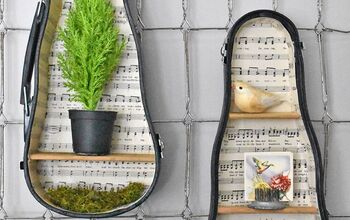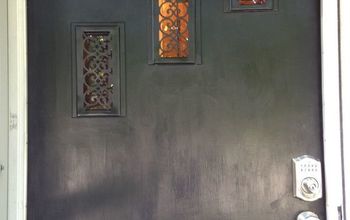How to Remove Scratches From Glass Safely and Effectively

By Brooke Ressell
When you really think about it, the average person owns quite a few items with glass surfaces in and around their home. Things like windows, tabletops, eyeglasses, windshields, and shower doors all have glass components that make these items look exceptionally good when you first purchase them. But although glass is pretty durable, it can get scratched over time, which leaves these same products looking less than stellar as a result.
If you’re facing this issue, you’re probably wondering how to remove scratches from glass so that you don’t have to deal with the expensive replacement costs that often come with buying new items. That’s why we’re happy to show you how to remove glass scratches in several different ways—most of them using household products you probably already own—so that the items in your home look as good as new again.
How to Remove Scratches from Glass with Baking Soda
How can scratches be removed from glass without using any toxic chemicals? The baking soda method is a safe and easy way you can use a common household product to fill in any minor scratches left on your glass items at home.
Tools and Materials Needed:
- Baking soda
- Water
- Bowl
- Spoon
- Sponge or towel
Step 1: Make a Paste
Mix one part baking soda water with one part water in a bowl to make a paste. Your exact measurements will vary depending on how large your scratches are and how many you have to fix, but for every one tablespoon of baking soda, add exactly one tablespoon of water.
Step 2: Stir
Using a spoon, stir the baking soda and water together until they form a paste-like consistency. Your paste should be moist and easy to stir, not powdery or too liquidy.
Step 3: Apply the Paste
Next, dip your sponge or towel into the paste, and then rub it over the scratched glass in a circular motion. Repeat the process until the scratch is filled with the paste.
Step 4: Remove Excess Paste
Once the scratch is properly filled, dampen the other end of the sponge or towel, and wipe away any excess paste from the glass.
How to Remove Scratches from Glass with Toothpaste
For those looking for how to remove scrapes from glass with another common household item, the toothpaste method may be the perfect answer for you. It works by filling in the scrape so you can’t see it anymore.
Tools and Materials Needed:
- Whitening toothpaste (do not use gel toothpaste)
- Water
- Towel or washcloth
Step 1: Prepare Towel or Washcloth
Take a towel or washcloth and dampen it under the faucet. Squeeze out any excess water into the sink then place a small dab of toothpaste on the corner of the towel or washcloth.
Step 2: Apply the Toothpaste
Using a circular motion, rub the toothpaste into the scratch on your glass surface until you can no longer see any sign of the scratch.
Step 3: Remove Excess Toothpaste
Using a clean, dry corner of your damp towel or washcloth, rub the excess toothpaste off of the glass surface.
If you can still see the scratch after removing the excess toothpaste with your towel or washcloth, repeat Steps 3 and 4 by reapplying toothpaste to the scratch and removing any of the excess toothpaste until you can no longer see the scratch.
How to Remove Scratches from Glass with Nail Polish Remover
If you’re asking yourself, ‘how can I remove scratches from glass with minimal effort?’ The nail polish method may just be the solution for you. Like the other methods, the clear nail polish fills in those glass scratches, making them invisible.
Tools and Materials Needed:
- Clear nail polish
- Nail polish remover
- Towel or washcloth
Step 1: Apply Clear Nail Polish
Open the clear nail polish bottle and carefully brush a thin layer of polish onto the scratched glass surface area. Let it sit for one hour. The clear nail polish needs time to cure over the glass in order to work properly, so don’t skimp on the time requirement.
Step 2: Prepare Towel or Washcloth
After the hour is up, the nail polish will be dry. Dampen the towel or washcloth with a small amount of nail polish remover.
Step 3: Rub the Glass Surface
Quickly rub the towel or washcloth—already dampened with nail polish remover—over the scratched glass surface and surrounding areas, removing any nail polish that remains on the outside of the scratch. Learn our hack for cleaning up spilled nail polish.
How to Remove Scratches from Glass with Metal Polish
Another item that surprisingly takes scratches out of glass is metal polish. With just a few easy steps, you can clean away your glass scratches in no time.
Tools and Materials Needed:
- Rubber gloves
- Metal polish
- Water
- Towel or washcloth
Step 1: Put On Rubber Gloves
Before working with the metal polish, make sure to place rubber gloves on your hands because metal polish does contain toxic ingredients.
Step 2: Prepare Towel or Washcloth
Once your rubber gloves are on, dampen a clean towel or washcloth, and then apply a very small dab of metal polish onto the corner of the towel or washcloth.
Step 3: Apply Metal Polish
Lightly rub the metal polish into the scratched glass in a circular motion, filling the entire scratch. Metal polish has abrasive properties that can actually damage glass when used in excess. Be sure to use just enough metal polish to fill any scratches on your glass surface and not any more.
Step 4: Remove Excess Metal Polish
Using a clean corner of your towel or washcloth, wipe off any extra metal polish from your glass surface outside of the scratch.
Photo via Eloise
Tips for Preventing Scratches on Glass
Don’t wait until you’re searching for answers to the question: ‘how do you remove scratches from glass?’ There are several things you can do in order to prevent needing these glass scratch fixes in the first place.
Here are ten tips for preventing scratches on glass:
- Treat all glass surfaces carefully.
- Remove rings and other jewelry before cleaning any glass surfaces.
- Clean household or auto glass surfaces with microfiber cloths and glass cleaner.
- Don’t use any products on glass surfaces that are known to scratch glass, like abrasive sponges or gritty cleaners.
- Keep sharp objects like knives, pens, and pointy metal objects away from any glass surfaces.
- Take care when removing snow and ice from auto glass.
- When possible, park your car in a closed garage to prevent scratches on your glass windshield.
- Carry your eyeglasses by the frames, not the lenses.
- Always put your eyeglasses away in a hard protective case when you’re not wearing them.
- Don’t use household glass cleaners on eyeglasses as this can remove any protective coatings and eventually lead to scratches.
When to Consult a Professional
There are times when it’s best to consult a professional instead of attempting to fix glass scratches on your own.
All of the methods described above work well for minor scratches on glass surfaces—not deep scratches, chips, or cracks. If your glass surface has a deep scratch, chip, or crack, these methods will not work, and they can even lead to your glass surface being damaged further. Consider hiring a professional to remove deep scratches from glass, fill glass chips, or replace glass that has been cracked beyond repair.
Another circumstance in which you may want to consult a professional is anytime a glass repair project is simply too large for you to handle. If you have very large pieces of glass that are scratched, you may not want to spend the time and energy fixing it on your own.
Lastly, you may want to hire a professional if the glass surface is difficult for you to reach, like if you’d like to repair windows that are high off of the ground. You definitely don’t want to fall or otherwise injure yourself which may happen if you are struggling to reach the glass surface and use any of the glass repair methods at the same time. Professionals will have the right equipment to make repairs safely.
Have you successfully removed scratches from glass surfaces before? If so, tell us about it in the comments below!

























Frequently asked questions
Have a question about this project?